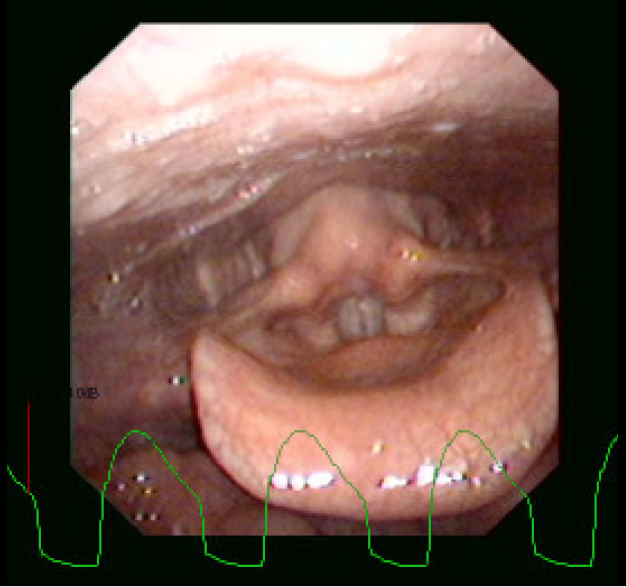When looking at the videos from the endoscopy study in 2007 certain patterns are seen in the laryngeal gestures AND the waveform within each mode. A still image for each of the modes was produced from the videos.
The Laryngeal gestures and the Laryngograph waveforms are more to be seen as patterns of progression from mode to mode, rather than absolutes. The larynx, the laryngeal gestures and the waveforms often differ from singer to singer, some singers have really weird waveforms, but still the patterns often show similar features. The progressive change in the patterns can be used as a guideline on how to identify the modes for an individual singer.
On the stills from the videos and on the video itself both the laryngeal gestures and the waveform are seen.
In Overdrive the front and the back of the laryngeal opening approach each other, making the opening of the larynx much more narrowed and creating an angle between the arytenoids and the aryepiglottic fold, and also an acute angle between the aryepiglottic fold and epiglottis. The cuneiforms are rolled in even more.
All these features are more exaggerated than seen in Curbing but less than is seen in Edge.
Also notice the laryngograph waveform in Overdrive shows a steep onset and a fairly long closure of the vocal folds and sometimes a roll off with a little knee. The steep onset indicates that the vocal folds are coming together very rapidly and stay together for longer, so they are more closed than open during the vibratory cycle, which corresponds nicely with the loud volume often used in Overdrive.
This information comes from a study Visual Vocal Mode Test Study on stills, with the title ‘Laryngeal gestures and Laryngograph data associated with the four vocal modes as described in the Complete Vocal Technique method of singing teaching’. This study was presented by Cathrine Sadolin and Julian McGlashan at BVA ‘Choice for voice’ conference in London, England, 2010.

